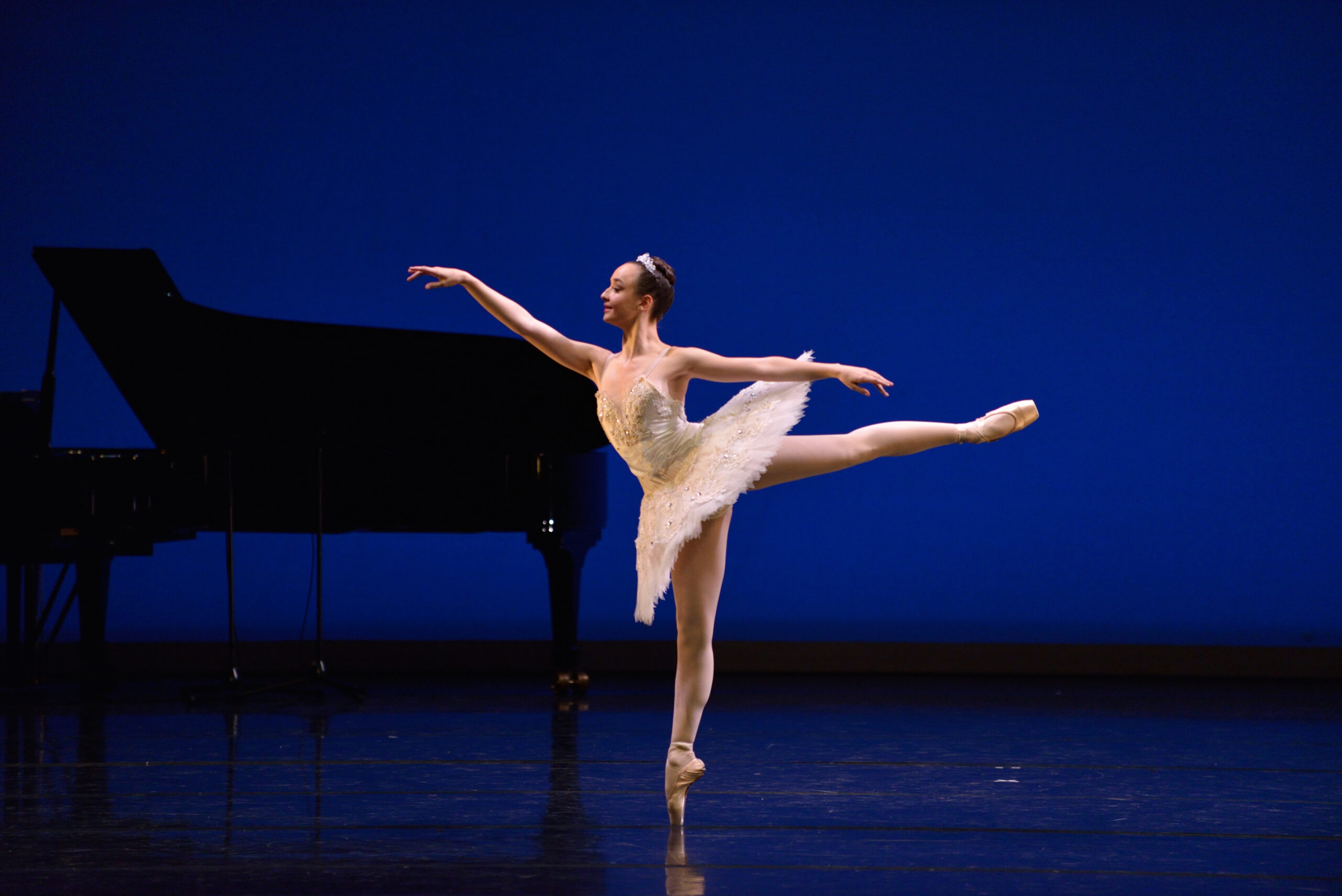
The Royal Academy of Dance (RAD) offer an internationally recognized portfolio of examinations designed to motivate and encourage students of all ages and levels of ability. Click here to get an inside look at what exams are like
They offer examination programs to suit all, from students just beginning ballet, to those who wish to pursue a career in dance. Candidates can begin the RAD curriculum aged 2 ½, but there are no upper age limits for the syllabi.
Every year, if our students have attended the suggested number of classes per week and the teachers feel the student is prepared, examinations are held for their class level work. Students work from September until April toward strengthening their ability through a set syllabus, and an Examiner from Royal Academy of Dance evaluates their technique.
All Examinations and Class Awards are externally assessed by an Examiner who is appointed, trained and monitored by the RAD. The RAD has an International Panel of Examiners resident throughout the world. Examiners undergo a rigorous selection process and training program before being appointed to the Panel. Their professional expertise, together with their ability to create a welcoming and reassuring environment in the examination studio, ensures the provision of high standards and a positive examination experience for all candidates. All Examiners have completed a check with the Criminal Records Bureau (or equivalent body) and adhere to the policies and procedures of the RAD Examinations Board, including equal opportunities and child protection. Examiners are not assigned to examine at the same location within any two year period.
Graded Levels:
Ballet, Free Movement, and Character
Pre-Primary And Primary levels begin at age 5, and focus on foundations of ballet technique and imaginative movement
Grades 1-8 consists of three dance disciplines:
• Ballet – the foundation and the most important part of the syllabus
• Free Movement – it has been influenced by and incorporates movements in common with other dance styles such as Natural Movement, Contemporary and Classical Greek Dance
• Character (Click here for our overview page) – the theatrical presentation of national dance using original ethnic dance and music which has been freely adapted for the theater. The three styles – Hungarian, Russian and Polish -were selected because of their historic importance in the development of the nineteenth century full-length classical ballets.
Study for these examinations provides students with:
- an increasing ability to demonstrate practical knowledge of the above disciplines with the appropriate technique, musicality and performance qualities
- increased self-confidence through the learning, memorizing and performing of prescribed sequences of movement, studies and dances
- awareness and understanding of working with others
- an appreciation, through practical experience, of three contrasting dance disciplines and their accompanying music
Vocational Levels:
Ballet and Pointe work
The Vocational Graded Examinations in Dance syllabus provides an in-depth study of ballet developing the technique, music and performance skills of the student. It introduces pointe work for female candidates. This highly focused and practical training education prepares students for a dance, or dance related, career. The Vocational Graded syllabi are appropriate for students from the age of 11 years. Students wishing to study for Vocational Graded examinations should have the maturity and technical aptitude to enable them to respond to demanding study.
*Some of our more serious students choose to follow a vocational path along with Grade 6, 7, and 8. These vocational classes are more technical in nature and require a substantial commitment from the student. Three or more classes a week are often needed in order to be successful in passing the examinations.
Study for these examinations provides students with:
- the means to further their knowledge and understanding of ballet
- a progressive measure of attainment against specific criteria
- a sound ballet base for vocational dance training programs
- an opportunity to gain internationally recognized qualifications and work towards the Solo Seal Award, (the highest level of examination offered by the organization).
There are six levels of vocational examinations commencing with Intermediate Foundation and culminating in the Advanced II Certificate, that enables students to progress to the final Solo Seal Award.


